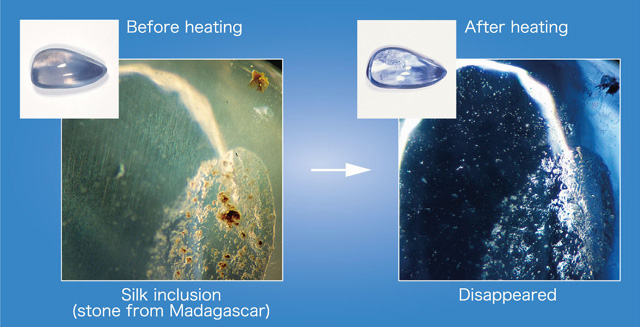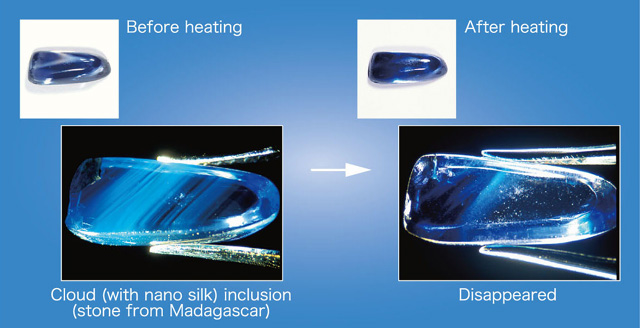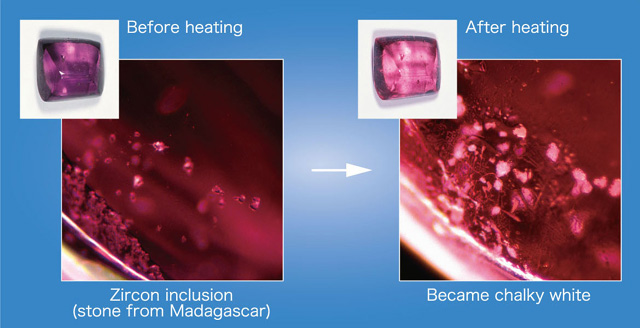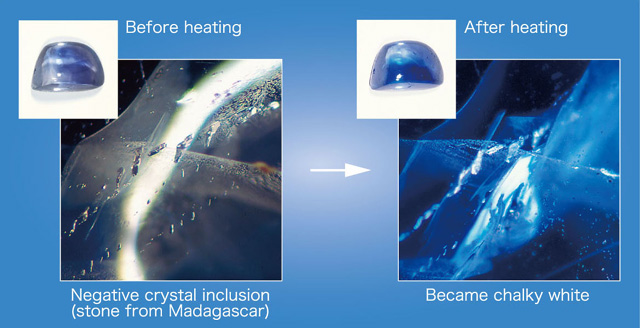|
||||||||||||||||
|
♦ Introduction
In accordance with the revision of regulation on the expression on identification reports in September 2004, heat treatment status on corundum (rubies and sapphires) started to be individually indicated on the identification reports issued by AGL (Association of Gemmological Laboratories Japan) member laboratories. In identifying the corundum, AGL sets that certain types of spectrophotometers such as UV-visible range or FTIR are mandatory, and determination of unheated status should be made by synthetic judgement using advanced analytical techniques such as Raman spectral analysis or laser tomography or X-ray fluorescence analysis. Here introduced are the identification techniques for heated / unheated status employed at GAAJ laboratory. ♦ Features of heated corundum observed under standard identification tests ź Features seen under magnification Detailed observation of internal features is very important to identify heated rubies and sapphires. As many crystal inclusions have lower melting point than the host mineral corundum, they may melt or discolour by heating process. Silk inclusion, which is almost always seen in rubies and sapphires, is actually needle-like crystal of rutile, which breaks into dots when heated at high temperature and eventually disappears (figure 1). The temperature they melt varies according to the atmosphere and other conditions of heating process. The existence of silk inclusion that shows no sign of alteration has been long believed as an evidence of unheated status, however, recently low temperature heating process (under 1000ºC?) attracted controversy and the identification became more complicated.
In similar manner, inclusion resembling clouds that is assumed minute rutile crystal is also reduced or disappeared by heating at high temperature (figure 2).
Zircon is also one of commonly included minerals in rubies and sapphires. Zircon inclusion has been regarded as a characteristic feature of the sapphire from Sri Lanka, but today it is rather that of stones from Madagascar (Ilakaka). Zircon crystal that is included in unheated corundum has high transparency and often shows halo fissure. The crystal reduces its transparency by heating and turns into chalky white colour (figure 3).
Many crystal minerals (such as feldspars and apatite) are altered so-called snow ball by high temperature heating. Black inclusion will fade or turns to white by heating. Negative crystal is regarded as a type of liquid inclusions. It turns to chalky white by heating (figure 4).
|
||||||||||||||||
|



